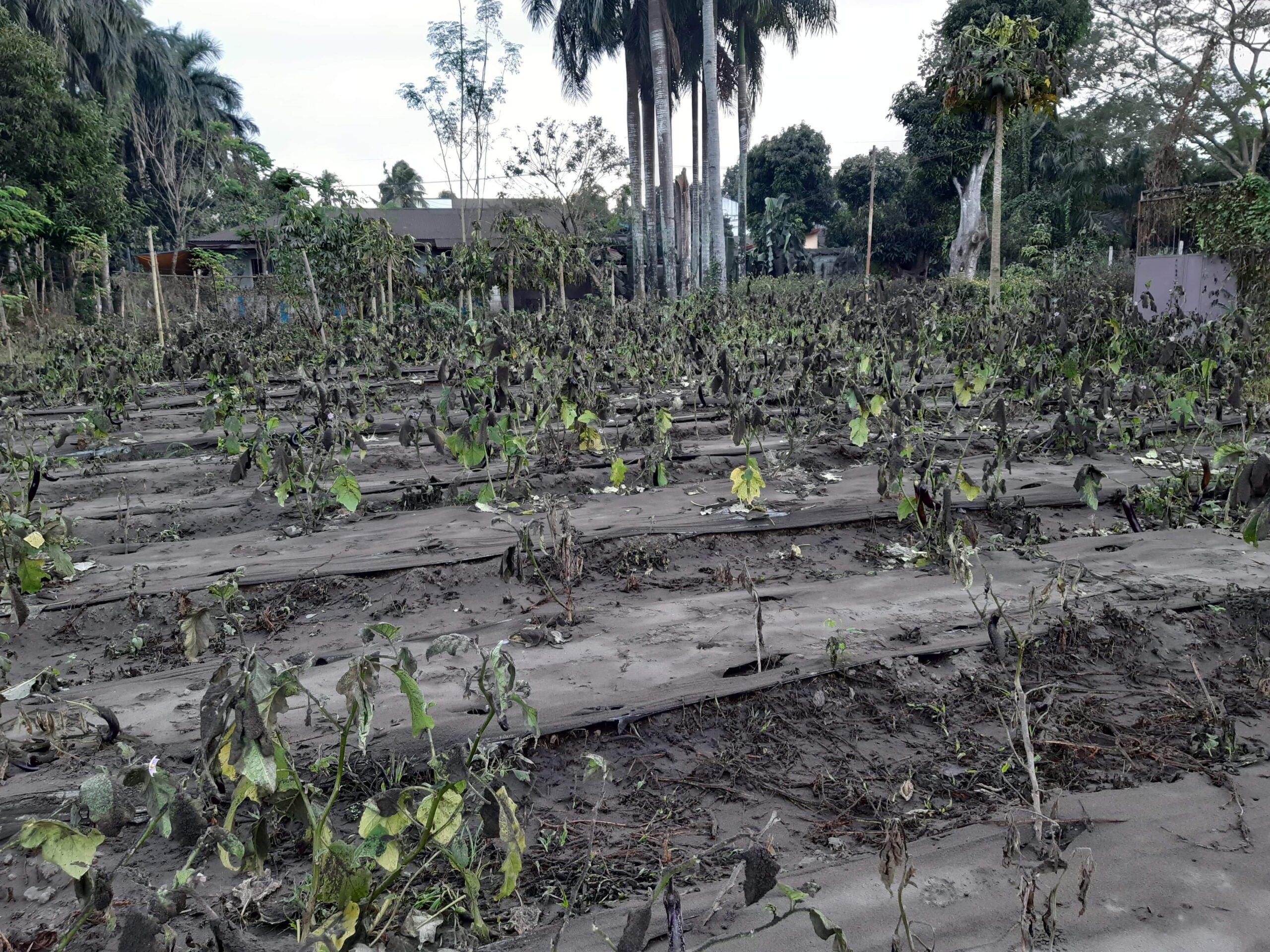SUMMARY
This is AI generated summarization, which may have errors. For context, always refer to the full article.

ALBAY, Philippines – Heavy ashfall from the restive Taal Volcano has wiped out a bee pasture in Calamba, Laguna.
“It was a depressing sight,” said bee expert Ame Locsin, who supervises the pasture for the University of the Philippines Los Baños (UPLB) Bee Program.
The city of Calamba lies about 40 kilometers from Taal Volcano in neighboring Batangas. Ash almost immediately reached Laguna after the volcano began erupting on January 12.
By Locsin’s estimate, the farm lost roughly P200,000 in damage caused by Taal’s eruption, not to mention the impact on the bees that have lost their food source: plants.
The bee pasture is one of the program’s experimental farms meant to show farmers and stakeholders the benefit of insects as pollinators, especially bees, Locsin said.
“We want to bring back the pollinators to these areas and show them that it can be done by planting and maintaining a sanctuary zone within the farm,” she added.
Within the farm’s 1,500-square meter property is a 350-square meter sanctuary zone or “yellow lane” where cosmos, marigold, kopeas, lagundi, and some wild flowers were planted. All of this had been ruined by the ashfall, which had turned the rich brown earth gray.
“Ideally, the plants should have been gently brushed then hosed down as soon as the ashfall lessened. But, unfortunately, there was no water nor electricity available for several days,” Locsin said.
Once the plots are cleared, the plants that could not be saved would be discarded and replaced.
Back-up plan needed
Locsin said that for a calamity-prone country like the Philippines, it is important to be prepared, and being prudent and having backup plans are the ways to do that.
“We have backup seedlings for replanting that are housed in another site not so affected by the ashfall. We had a contingency plan prepared even before we actually started the project,” she said.
If vegetation is wiped out from an area, it is best to just transfer the bees. Because bee colonies return to their hive or box after sundown, “you only need to close their boxes at night and transfer them to another site,” Locsin said. (READ: 11 fascinating facts about fees, the most important pollinators)
However, only managed colonies can be transferred this way. Wild bees would have to be left behind to try and survive on their own which, for Locsin, was heartbreaking.
In fact, the wild bees in the farm are the most affected by the ashfall. Among them are amygillas (blue banded bees), xylocopas (carpenter bees), thyreus (cuckoo bees), megachilidae (leaf cutter bees and mason bees).
The pasture’s “managed” bees belong to the Tetragonula biroi (stingless bees) and Apis mellifera (European honeybees) species. (READ: How beekeeping helped a Sorsogon coconut farm)
Bees can help after disasters
The farm’s next step would be to assess the economic value according to which of the bee plants had good yields of honey, pollen, and propolis.
Set up in 2018, the Calamba farm has also been developing “bee houses” made of native materials to entice native solitary bees to nest. Nearby bee plants then get pollinated, while locals earn a living by planting in the farm.
“We need the bees for food security. Thirty-five percent of the world’s crops are reliant on bee pollination directly. Indirectly, some of the forage used for livestock are also dependent on pollination by bees,” Locsin pointed out.
Cultivating bees can also help in recovering in the aftermath of disasters. By planting tree and plant species friendly to endemic bee populations, the new foliage would propagate faster because of pollination by the bees.
“The government can help by changing the list of trees used in reforestation to native bee-friendly trees. Even plants used to beautify government buildings and structures can be changed to bee friendly flowers,” Locsin said.
The UPLB Bee Program already did this with Super Typhoon Yolanda (Haiyan) survivors in Eastern Samar, she added.
As the bee pasture team’s motto puts it, “Plant it and they will come.” – Rappler.com
Add a comment
How does this make you feel?
There are no comments yet. Add your comment to start the conversation.